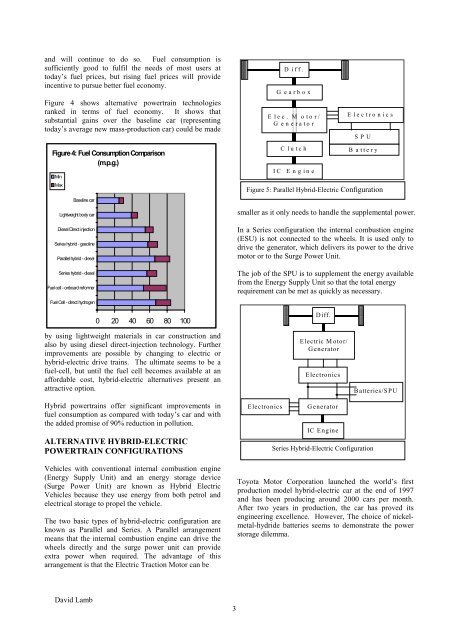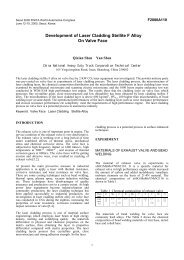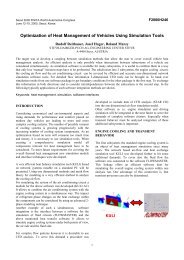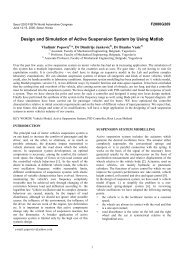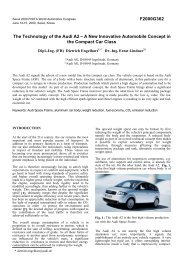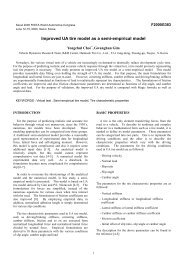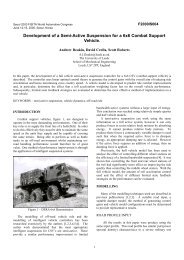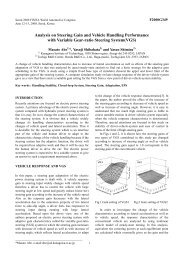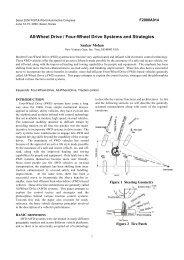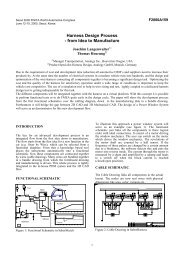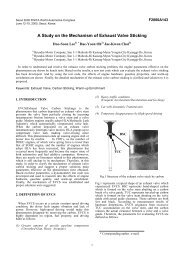The aXcessaustralia Hybrid Electric Car Project
The aXcessaustralia Hybrid Electric Car Project
The aXcessaustralia Hybrid Electric Car Project
Create successful ePaper yourself
Turn your PDF publications into a flip-book with our unique Google optimized e-Paper software.
and will continue to do so. Fuel consumption issufficiently good to fulfil the needs of most users attoday’s fuel prices, but rising fuel prices will provideincentive to pursue better fuel economy.Figure 4 shows alternative powertrain technologiesranked in terms of fuel economy. It shows thatsubstantial gains over the baseline car (representingtoday’s average new mass-production car) could be madeFigure 4: Fuel Consumption Comparison(m.p.g.)MinMaxBaseline carLightweight body carDiesel Direct injectionSeries hybrid - gasolineParallel hybrid - dieselSeries hybrid - dieselFuel cell - onboard reformerFuel Cell - direct hydrogen0 20 40 60 80 100D iff.G e a rb o xElec. M otor/G e n e ra to rClutchIC Enginesmaller as it only needs to handle the supplemental power.In a Series configuration the internal combustion engine(ESU) is not connected to the wheels. It is used only todrive the generator, which delivers its power to the drivemotor or to the Surge Power Unit.<strong>The</strong> job of the SPU is to supplement the energy availablefrom the Energy Supply Unit so that the total energyrequirement can be met as quickly as necessary.Diff.ElectronicsSPUBatteryFigure 5: Parallel <strong>Hybrid</strong>-<strong>Electric</strong> Configurationby using lightweight materials in car construction andalso by using diesel direct-injection technology. Furtherimprovements are possible by changing to electric orhybrid-electric drive trains. <strong>The</strong> ultimate seems to be afuel-cell, but until the fuel cell becomes available at anaffordable cost, hybrid-electric alternatives present anattractive option.<strong>Electric</strong> Motor/GeneratorElectronicsBatteries/SPU<strong>Hybrid</strong> powertrains offer significant improvements infuel consumption as compared with today’s car and withthe added promise of 90% reduction in pollution.ALTERNATIVE HYBRID-ELECTRICPOWERTRAIN CONFIGURATIONSVehicles with conventional internal combustion engine(Energy Supply Unit) and an energy storage device(Surge Power Unit) are known as <strong>Hybrid</strong> <strong>Electric</strong>Vehicles because they use energy from both petrol andelectrical storage to propel the vehicle.<strong>The</strong> two basic types of hybrid-electric configuration areknown as Parallel and Series. A Parallel arrangementmeans that the internal combustion engine can drive thewheels directly and the surge power unit can provideextra power when required. <strong>The</strong> advantage of thisarrangement is that the <strong>Electric</strong> Traction Motor can beElectronicsGeneratorIC EngineSeries <strong>Hybrid</strong>-<strong>Electric</strong> ConfigurationToyota Motor Corporation launched the world’s firstproduction model hybrid-electric car at the end of 1997and has been producing around 2000 cars per month.After two years in production, the car has proved itsengineering excellence. However, <strong>The</strong> choice of nickelmetal-hydridebatteries seems to demonstrate the powerstorage dilemma.David Lamb3


